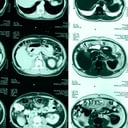A recent study of 18 juvenile offenders on death row in Texas found that nearly all participants experienced serious head traumas in childhood and adolescence, came from extremely violent and/or abusive families, had one or more severe mental illnesses, and had signs of prefrontal brain dysfunction. The study, conducted by Dr. Dorothy Otnow Lewis of Yale along with other experts, suggests that most of the juvenile offenders on America’s death rows suffer from serious conditions which “substantially exacerbate the already existing vulnerabilities of youth.” In the study, Dr. Lewis and her colleagues reviewed all available medical, psychological, educational, social, and family data for each participant to clarify the ways in which these various aspects of development may have diminished a juvenile offender’s judgment and self control.
The study’s findings are similar to earlier research conducted by Dr. Lewis in 1988. Her work was cited in an amicus brief filed last year by the Juvenile Law Center and more than 50 other organizations in support of juvenile offender Christopher Simmons. In his case, Roper v. Simmons, the Supreme Court will rule on the constitutionality of executing juvenile offenders. A ruling is expected before July 2005. The article regarding Dr. Lewis’s latest study,“Ethics Questions Raised by Neuropsychiatric, Neuropsychological, Educational, Developmental, and Family Characteristics of 18 Juveniles Awaiting Execution in Texas,” was recently published in the Journal of the American Academy of Psychiatry and the Law. (32 American Academy of Psychiatry and the Law 408 (December 2004)). See Juvenile Death Penalty and Resources.



